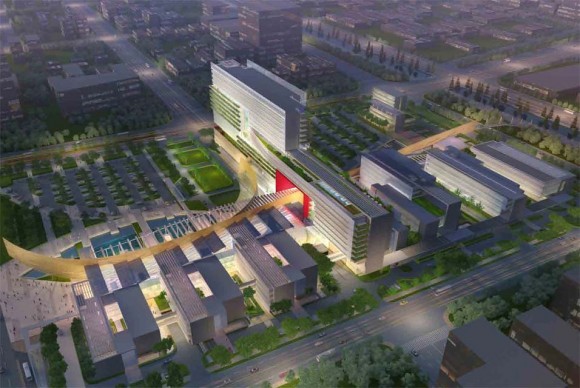American Institute of Architects selects three projects for National Healthcare Design Awards
August 24, 2011 by All Art News
Filed under Design & Architecture
WASHINGTON, D.C.- The American Institute of Architects (AIA) Academy of Architecture for Health (AAH) has selected the recipients of the AIA National Healthcare Design Awards program. The AIA Healthcare Awards program showcases the best of healthcare building design and healthcare design-oriented research. Projects exhibit conceptual strengths that solve aesthetic, civic, urban, and social concerns as well as the requisite functional and sustainability concerns of a hospital.
Jurors for the 2011 National Healthcare Design Awards include: Larry Speck, FAIA (Chair), Page Southerland Page; Sheila Bosch, Gresham, Smith and Partners; Turan Duda, AIA, Duda Paine Architects, LLP; Bruce Fowle, FAIA, FXFOWLE; Joseph Kuspan, AIA, ANSHEN+ALLEN; R. Doss Mabe, FAIA, ZGF and Thomas Trenolone, AIA, HDR, Inc.
Three healthcare facilities were selected in two categories; Built and Unbuilt.
Built
Seattle Children’s Bellevue Clinic, Bellevue, Washington NBBJ
The Seattle Children’s Bellevue Clinic (SCBC) provides outpatient surgery, imaging, urgent care and more than 15 specialty services. Using continuous process improvement (CPI) and integrated project delivery (IPD) methods allowed the client, design, and construction teams to program more service in less space and build it more effectively. Intended to serve lower acuity patients, the facility was designed with flexibility, efficiency and patient, family and staff experience in mind. Moving to a dual-circulation model improved efficiency for the staff while offering a healthier, more pleasant experience for the patients. Through a conscientious effort at increasing room efficiency and minimizing travel distances, the design effort achieved a 27% space savings, fitting 110,000 square feet of program into 80,000 square feet. This savings was achieved without sacrificing the patient experience or the improved processes.
Unbuilt
UCLA Outpatient Surgery and Oncology Center, Santa Monica, California Michael W. Folonis, Architects
This project is a hybrid academic and community outpatient surgery, oncology treatment and medical office facility. The design concept asserts that a more natural and less clinical environment promotes healing in patients and alert, productive behavior in doctors, staff and students. Taking advantage of climate and site conditions, the architects sought the maximum inclusion of natural day lighting and ventilation throughout the building, and an enhanced indoor-outdoor connection. They designed the building employing these principles using a California Modernist vocabulary. The design concept is inspired by the belief that Modernism, with its adherence to passive solar design, is the ideal means to realize the high standards of sustainability in healthcare design. The design achieves an aesthetic ideal, while delivering a patient-focused healing environment, the utility required by the owner, and meets the requirements for Gold LEED certification.
The First People’s Hospital, Foshan City, Quangdong Province, China HMC Architects
The goal of the design is to translate advanced western hospital ideas to accommodate Chinese local practices. On the medical planning side, the design concept challenges the way this region’s healthcare facilities have been designed in the recent past. Some of these challenges include obscured points of access, lack of clarity in campus organization, unappealing introverted campuses, ill-planned public spaces, difficult way finding, and a general lack of patient healing experience. In addition, there is little infrastructural planning for infection control in time for major epidemic outbreak. On the architecture side, the project is designed to best accommodate the local construction technology and practices that is incremental in its planning. The campus is organized into distinct parts to allow incremental growth. A kit-of-parts approach to exterior and interior systems was developed to be replicated throughout the campus to minimize construction confusion and allow for fast track construction.

